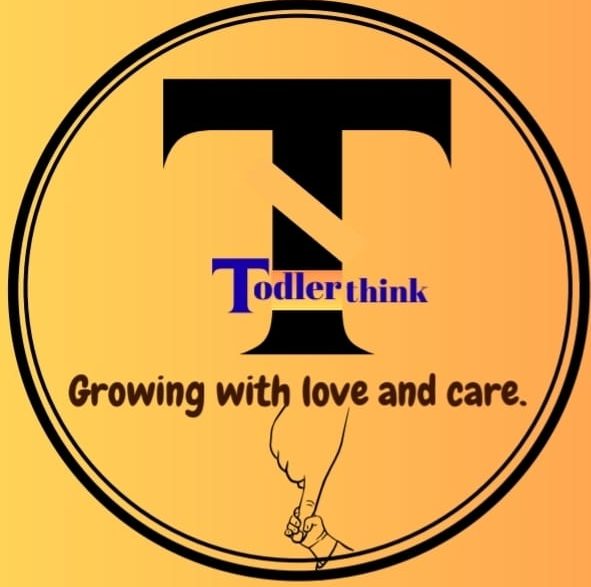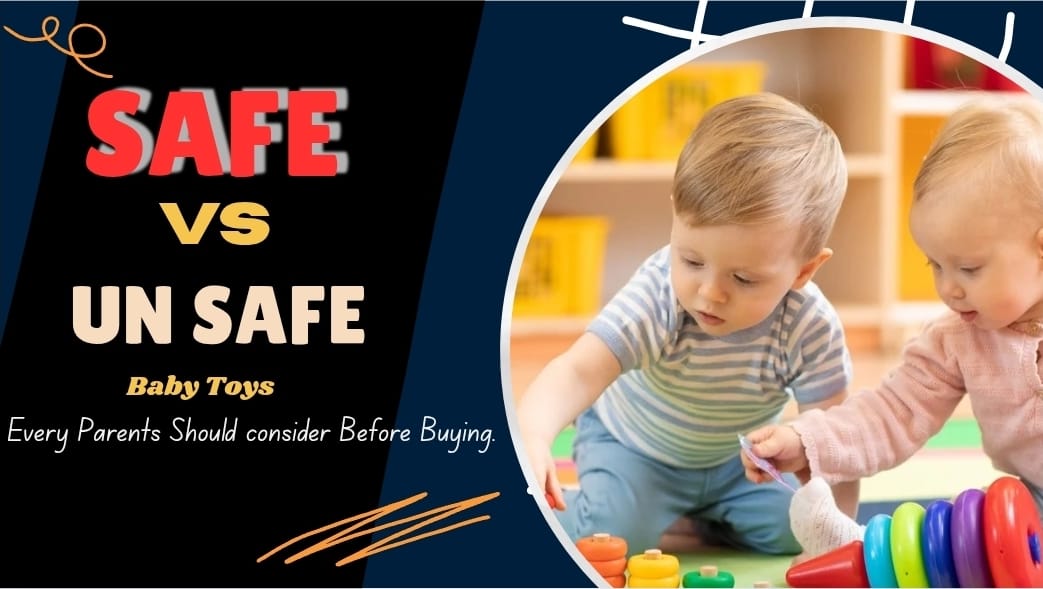
What Every Parent Should Consider Before Buying
If You Were Looking For How to choose save Vs unsafe Toys. With some toys unsafe for babies, identifying the safe ones from the unsafe ones will help you with some baby toy safety tips, types of safe toys, storage practices, and how to protect your little one from the risks associated with toys.
Introduction
Playtime is an undeniably big part of childhood. Toys stimulate baby senses, enlighten babies and provide some small joy for parents and their children. However, behind the shiny colors and cute shapes of the toys, some may harbor great risk. Dangers associated with unsafe toys include choking, poisoning, or long-term health problems
As parents, the important question is, how do we select safe toys for babies while bypassing the unsafe ones?

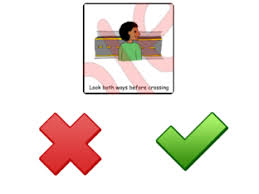
Image Source : Google
This comprehensive guide will encourage discussions on:
*.Why toy safety is so important
*.Characteristics of safe toys
*.Unsafe toys and their hazards
*.Additional safety tips for baby toys
*.Types of safe toys at various ages
*.Toy safety myths
*.Toy storage and maintenance
*.Parental involvement in toy safety
How Safe Are Toys?
Outlined below are basic safe toys for babies:
1.Age Appropriate – Always consider the age label. Toys made for super kids may contain small parts that are unsafe for babies.
2.Non-toxic Material – Safe toys are BPA-free, lead-free, and phthalate-free. This is important because babies chew toys.
3.Stay Alive – Toys should not be flimsy or break easily, particularly with small interchangeable parts.
4.Skin Friendly – No sharp edges, rough textures, or splinters.
5.Hygienic & Washable – Toys should be easy to clean to prevent bacteria buildup.
6.Safety Certifications – Look for ASTM (USA), EN71 (Europe), or ISI marks (India/Nepal).
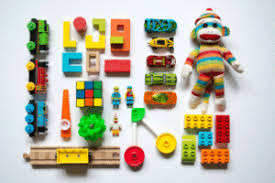
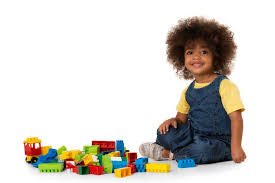
Image source: Google
Characteristics of Unsafe Toys
Some toys may appear attractive but may carry hidden dangers. Here are some factors to watch out for:
1.Little detachable parts – High choking hazard.
2.Magnetic pieces or button batteries – Extremely dangerous when swallowed.
3.Cheap plastic object giving out strong smell – Indicative of presence of harmful chemicals.
4.Paint that chips off – Could contain toxic lead.
5.Strings longer than 7 inches – Risk of strangulation.
6.Toys that are overly heavy – Could injure the baby upon falling.
7.No safety labels – Often unregulated, these products escape testing.

image Source:Google
Types of Safe Toys for Babies (By Age)
1. (0–3 Months)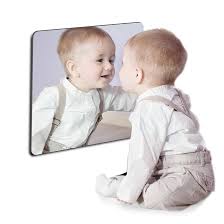
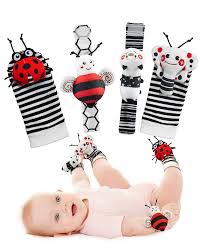
High-contrast rattles
Soft cloth toys
Unbreakable mirrors
2.(3–6 Months)
Teething rings
Soft plushies (without beads or buttons)
Crinkle fabric books
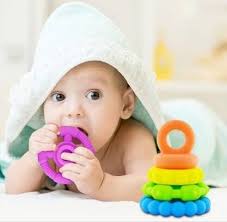
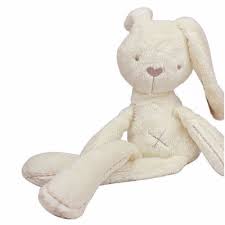

Image Source: Google
3.(6–9 Months)
Stacking cups
Sensory balls
Wooden grasping toys
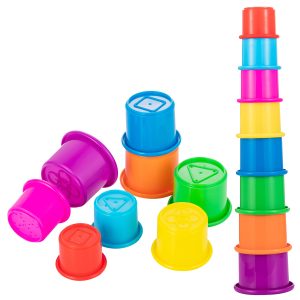
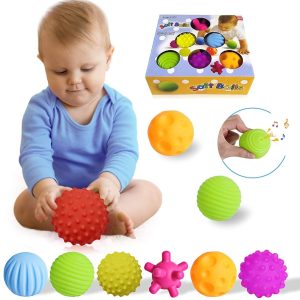
4.9–12 Months
Push-and-pull toys
Shape sorters
Large building blocks
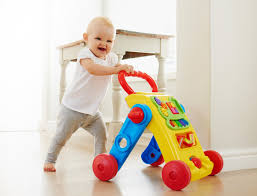
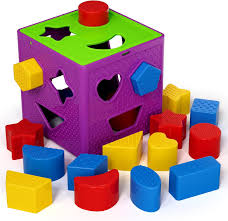 image source :Google
image source :Google
*.Choosing age-appropriate toys not only ensures safety but also supports developmental milestones.
Toy Recalls and Why They Matter
Many unsafe toys make it into the market before being discovered. That is when governments and safety boards issue recalls. Toy recalls happen when toys are found to be hazardous and toxic paint, breakable components, faulty design, or fire hazards are the reason.
Parents should always remain abreast of any toy recall in their countries, and upon receiving such information, the recalled toys should be disposed of.
Baby Toy Safety Tips for Parents
 Image source : Google
Image source : Google
1. Read Labels Carefully – Look for safety warnings and age recommendations for the toy.
2. Inspect Toys Before Use – Look for cracks, sharp edges, or broken attachments.
3. Avoid Buying Knock-Offs – Less expensive imitations may have skipped safety tests.
4. Supervision is Necessary – Any toy can be dangerous without supervision, even the safe ones.
5. Clean Toy Twice a Month – For daily cleaning, disinfect teethers; for washing plush toys, do so weekly.
6. Rotating Toys Is Important – Limiting the number of toys reduces both clutter and potential danger.
7. Store Toys in a Proper Manner – Storing toys in baskets or bins will prevent a tripping hazard.
Myths About Safety of Toys
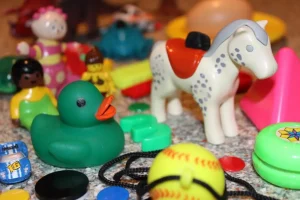 Image source :Google
Image source :Google

Not always. Some unsafe toys slip into the market before being recalled.

Only if they’re smooth, splinter-free, and coated with non-toxic paint.

Not necessarily. Heavy toys can hurt babies if they fall.

Price doesn’t guarantee safety — always check certifications.
Storing and Maintaining Toys Safely
Separate Toys by Age Group – Keep toys from older siblings out of the reach of babies.
Storage Bins – Toys are kept tidy, and tripping hazards are minimized.
Regular Checking – Dispose of broken or badly worn toys.
Sun Drying – Sunlight naturally disinfects washables.
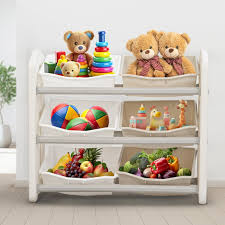 Image Source:Google
Image Source:Google
Role of Parents in Toy Safety
Parents are the first line of defense when it comes to toy safety. Their duties include:
Researching the product before buying
Supervising its condition
Supervising play
Educating older siblings on safe play
Keep in mind that no toy is 100% safe when the parent is not involved.

Image Source:Google
FAQs about Baby Toy Safety
1. How do I know if a toy is safe for my baby?
Check for certifications, avoid toys that have small parts, and choose age-appropriate toys.
2. Are wooden toys safe?
Yes, as long as they are smooth, durable, and painted with non-toxic paint.
3. How often should I clean toys?
Every day for teethers, weekly for plush toys, and as needed for others.
4. Are second-hand toys safe?
Sometimes, as long as they are properly inspected, but older toys may not meet current safety standards.
5. Which toys should I never give to a baby?
Avoid toys that have magnets, button batteries, long strings, and sharp edges.
Conclusion
A toy should bring joy but never at the expense of safety. By knowing the difference between safe and unsafe toys, parents can make sure their little ones have fun learning and developing.
In the end, remember these basic rules: Choose age-appropriate toys that are non-toxic, sturdy, and certified. In combination with careful supervision and regular cleaning and good storage practices, this will provide a safe and serene environment for baby play.
Safe toys do more than entertain – they foster development and health and offer peace of mind to every parent.
Note :
There is a blog about other toys below, so you can read it too, please click the link for read
Fat Brain Toys in the Age (0 to 3 Years)
Why Fat Brain Toys is Important
